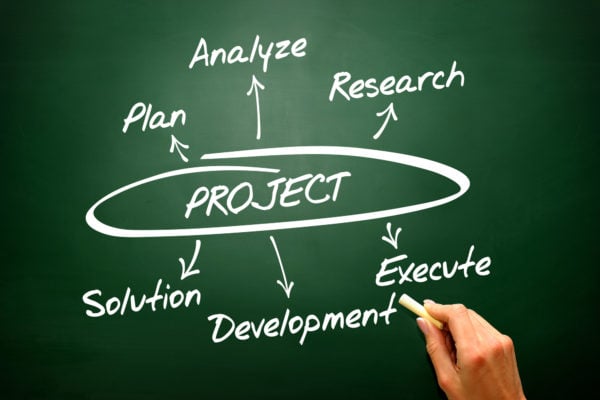The New Normal: Assessing, Implementing and Adapting to Change
After several months of closed doors, remote conferences, and business-as-usual being put on hold, the world has begun the transition back to normal. However, the question many business leaders are asking is, “Just what is the new normal?”
Defining the “new normal” is difficult because these last few months have expedited a process that was still in the infancy stage of implementation. Instead of businesses slowly setting up remote work processes and business process automation, they were required to implement these initiatives on the fly or create clunky workarounds.
Because of this, many businesses are coming back wondering which processes should stay in place and which ones were a necessity only for a short time. This is where business leaders must step back to assess, implement and adapt to the new normal. In this blog, we will take you through the key elements of each of those steps.

Assess to Evaluate the Necessary Changes
Over the last few months, many companies adjusted business processes to continue their business through the quarantine. As these companies return, they now must assess what adjustments are critical and should become a target for implementation versus what processes are merely a product of the circumstances and likely not necessary going forward.
There are a few key steps to properly evaluate whether or not a new process is essential to your future business operations:
- Identify what the process is and its impact on the business
- Define the process as it previously was and how it currently stands
- Evaluate gaps and opportunities
- Specify points of improvement
- Identify key people involved in the process
- Get input from the key people on potential changes and how the changes will impact their work
- Analyze the process to determine its value and feasibility as a standard process going forward
While going through the Assess phase, an honest, in-depth evaluation is necessary. In some cases, businesses discover that adjustments revealed issues with business processes that may have been ignored in the past but could not be ignored in the current environment.
Implement While Keeping Communications Channels Open
Once an evaluation of processes has occurred, the business must now determine the course of implementing the process on a permanent level. In the assessment phase, the key people involved in the processes were identified. This gives your company a clear understanding of who is involved and why they are involved. It also gives you a defined communication list.
During the Implement phase, communication is key. While implementing a new business process is likely easier than a software deployment, it can become complicated if the parties involved do not have open lines of communication that allow for input from those that work closest to the current process.
When implementing, it also is important to get buy-in from those involved. This is where change management is so key. The Kubler-Ross Change Curve provides the five key steps for implementing a new process:
- Create Alignment
- Maximize Communication
- Spark Motivation
- Develop Capability
- Share Knowledge
As you can see, implementing a new process is more than just finding a process and pushing it to go live. Typically, the initial response to a new business process is frustration or denial that the process needs to change. This is because people become accustomed to the current way things are done and are fearful of what the new process may be.
Maximizing communications to create a controlled conflict is one way to alleviate this. When peoples’ concerns are heard, it makes them feel their opinion is being considered and can help create a smooth transition into the new process.
It is also key to demonstrate the value of the new process. Team members typically have a better understanding of change when they see how it can make their work easier, more effective, or how it can remove time-consuming manual effort. Eventually, it can create an environment where people wonder why this wasn’t the way it was always done.
Ultimately implementing a new business process is about managing change and those involved in it. While there are obviously several other parts considered—including cost, time and value—all of those considerations can run astray if the change that’s happening is not properly managed.
Adapt with Strong Support from Management
Once the process is implemented, the next phase involves adapting to the new changes. Maybe the change is a hybrid work model where employees are not in the office full time or even no longer in the office at all. This would create entirely new changes to adapt to.
Many questions need to be answered:
- How will you track productivity?
- Are resource hours still the same?
- How do you manage all of your meetings?
Management must lead the way in adapting to the new normal. This means setting guidelines for how operations will run in the new normal, making expectations clear, and continuing open lines of communication that were established in the implementation stage. Adapting also includes sticking to the newly-implemented process. While the new process was chosen to be implemented for a reason, there is always the risk that once the business picks back, up employees will revert to old methods.
This is especially prominent if those involved were not properly trained during the implementation. Management must ensure that the new process is used as it was intended in order to see the predicted benefits that were established in the assessment phase.
Complete Buy-In Critical for Success
The three-phase process described above underscores why sparking motivation is so important. If those involved in the process do not fully buy into the new process, you will run into frustration as well as a portion of the staff reverting to old ways they had previously bought into.
Managers must aid those involved in learning how to work within the new process and share the knowledge they have, which will create more positivity around the process. This also develops an employee’s capability within the process—allowing them to feel confident that they have a firm grasp on the overall process and how it works.
In the new economic landscape, there will be several opportunities to expedite business process improvement. However, it is key to not expedite the assessment, implementation and adaptation of the process. If managers can create a strong change management plan, they will see adaptation to the new process increase greatly. Without a strong understanding of the change management plan by the entire team, the company risks getting to the end of the implementation and failing to create an environment of full adaptation.
Author: Trey Binette




